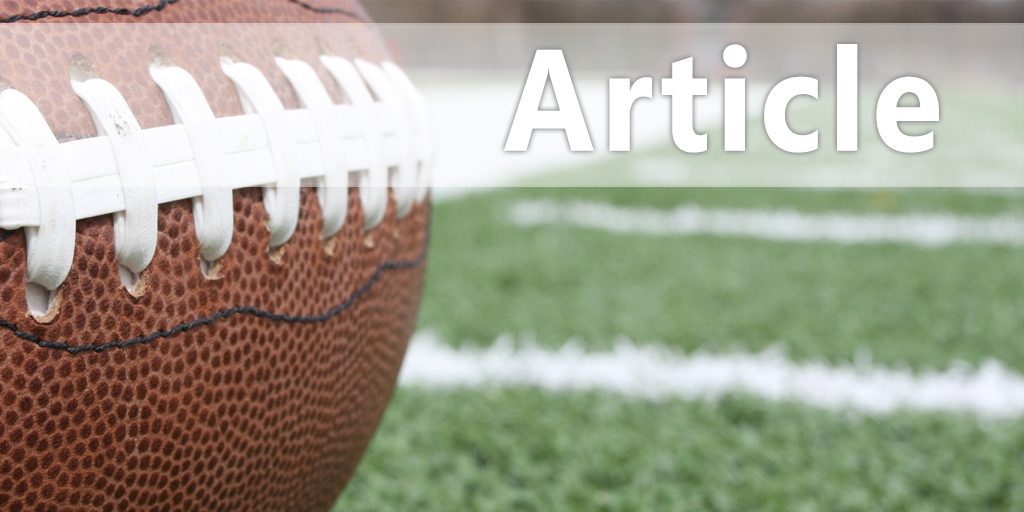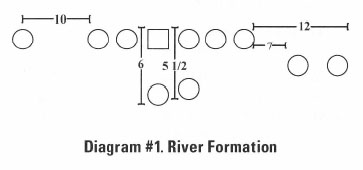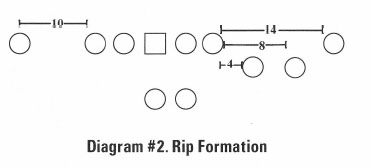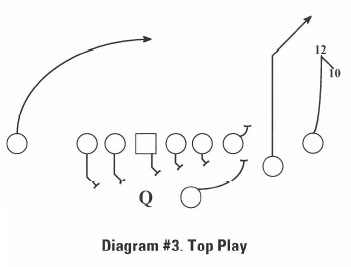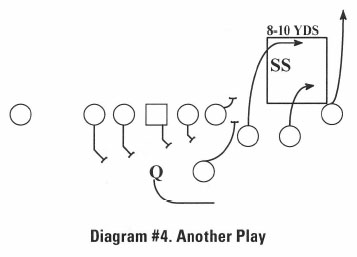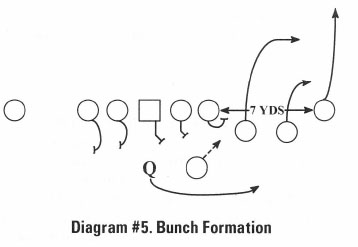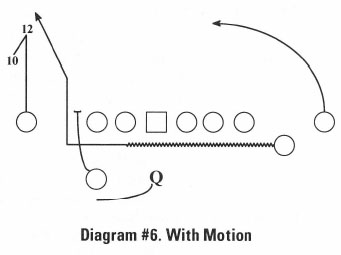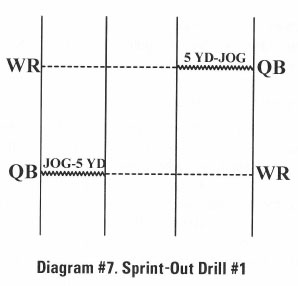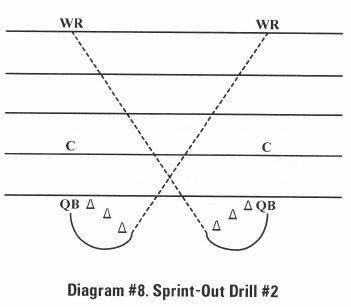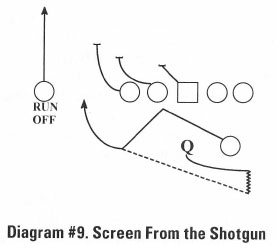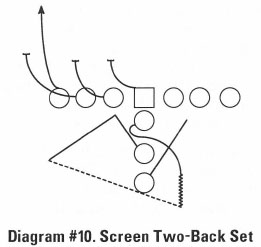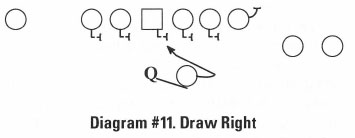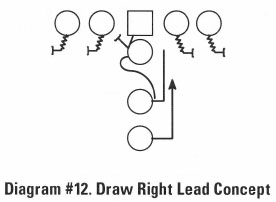|
Draws, Screens and the Sprint Out Pass
I want to start out with something a little different from what you may have seen before. I will get to draws and screens in just a minute. I found this at a clinic that I went to a few years ago. I had never seen this at a clinic before, and I have not seen it at any clinic since then. I have been going to clinics for a long, long time. I wanted to give you something that you could take back with you that might be of benefit, even if it is not on sprint-outs, draws, or screens. This really helped me out a lot, especially in my relationship with our parents and my players. I meet with my parents in the first week of August. This is what I go by. This is what I use to build the relationship with my parents. For our purposes, I will list the items that I cover on our agenda and make a few comments about some of them.
I include the varsity and junior varsity football schedule in our packet and information about the tradition of the football program at Magnolia High School. 1 include the history so the parents can see the tradition that we have had at Magnolia. We started football in 1902, and we are one of the few teams in the state of West Virginia that has over 600 wins. We have two state championships, with the last being this past season. I finish off the packet with forms that must be completed and signed by the parents, indicating that they have attended our meeting and understand the contents and requirements of our program, including the concussion management program. I hope this is something that you can use; again, it has helped me a lot. When I first started meeting with the parents prior to the season, my assistants thought I was nuts. I have received a great reception from our parents with this, and everybody knows the rules from the beginning. We are an AA school in the state of West Virginia. We average about 40 to 45 players each year. We are the second-smallest AA school in West Virginia. I generally only have one quarterback, so I cannot afford to lose my quarterback. We pass a lot out of the sprint-out. We use these two base formations. We can run this from under center, or out of the shotgun, it does not matter. Generally, we operate out of the gun. When we call this formation to the right, we call it River (Diagram #1). When we run this formation to the left, we call it Lake. It is R for right (and for River), and L for left (and Lake).
We call Rip to the right, and we call Lip to the left (Diagram #2). We tell our receivers to have their inside foot up. Our sprint-out is a run/pass option. A couple of years ago, we had a quarterback who liked to run the ball. He was a tailback playing quarterback. He liked the idea of getting on the edge. If he did not like what he saw when he got on the edge, he would tuck the ball and run. He ran for 1,700 yards and passed for 1,300 yards out of this offense. Let me draw up our top play out of this formation (Diagram #3). If we have the ball in the middle of the field, the outside receiver is located just outside of the numbers. The inside receiver is located on the hash marks. It is crucial that the outside receiver runs to 12 yards, and then back to 10. He comes back at an angle to put the defender on his inside shoulder, so he has his outside shoulder and hand free. We will sprint to him. We tell the quarterback the ball must be delivered before the receiver makes his cut. If the receiver sticks it at 12 and pivots out, the ball is going to be on its way. Not every quarterback can throw the ball on the run. We have drills that we use to make him better at it. The quarterback is opening up, and he gets depth. He has to get depth because the deeper the quarterback, the better off he is. The quarterback will sprint out with the ball, armpit-to-armpit, and then get his shoulders square to the receiver. He will throw it and follow through. Another play we like to use in the sprint-out is this (Diagram #4). There is no tight end now, so we hinge off of the right tackle. The right tackle must get his head to the outside of the defensive end. The outside or #1 receiver will run everybody off. The #2 receiver gets into the flat right away. Our #3 receiver runs an 8- to 10-yard banana route. We tell our quarterback to deliver the ball to the #2 receiver, if he is open, right away. What this amounts to is a long handoff. The quarterback is reading the strong safety. If the strong safety covers the flat, the window is open behind him. We will now throw the ball to the #3 receiver in that window.
Let me show you a couple of drills that we use for the sprint-out pass (Diagram #7). In this first drill, the quarterback is going to jog for five yards, keep his shoulders square to the receiver, and throw the ball for 10 yards. We will get 8 to 10 reps in each direction. We do have to put some time in on it. We have found that most defensive coaches do not put a lot of time in defending the screen. I know our defensive coordinator puts in a lot of time to stop the screen, and we still get screened on. This is why we put so much time in, offensively, on the screen pass. The screen play will get into the defensive players' heads. If they are looking for the screen, they cannot be as aggressive as they normally would be. This is to our advantage. If we are going to screen to the left, we will set our running back to the right (Diagram #9). At the snap, the back will sprint directly toward the left guard. We want him to stay low and hide behind the left guard. We tell the quarterback to sprint until he gets to a position behind the right tackle, he stops, and then we have him backpedal to get depth. Let those 6'4" and 6'5" defensive lineman who weigh 240 and 250 come. When we run this out of the two-back set, we always screen to the fullback (Diagram #10). The fullback will hide behind the guard. The quarterback will reverse out. We will fake the power, isolation, The last thing I want to cover is the draw play (Diagram #11). Our draw is based on the sprint-out series. We use the same type of formations. The Our linemen cannot get beat to the inside. We want to force the defender to the outside, and we will take him wherever he wants to go. The quarterback will take the ball like a sprint-out, and then he will hand it to the running back as he is coming back upstream. The running back will act as if he is going to attack to the right, and then we are going to give the ball to him with an inside handoff. We can also run the draw right with a lead concept (Diagram #12). The quarterback will reverse out. Both the tailback and the fullback will step together. On all of our draws, the wide receivers will run off their defenders.
|
|
|
